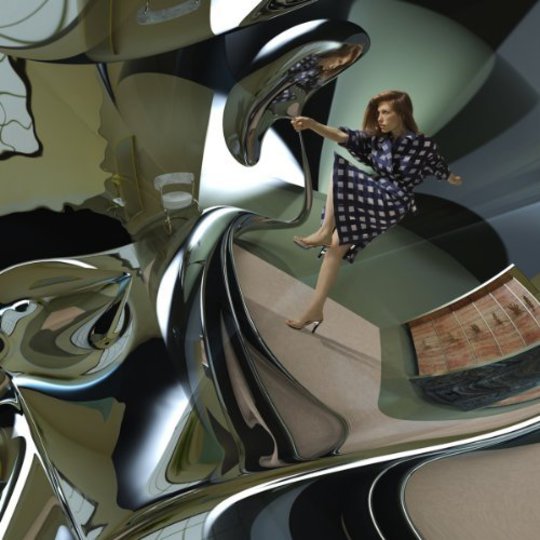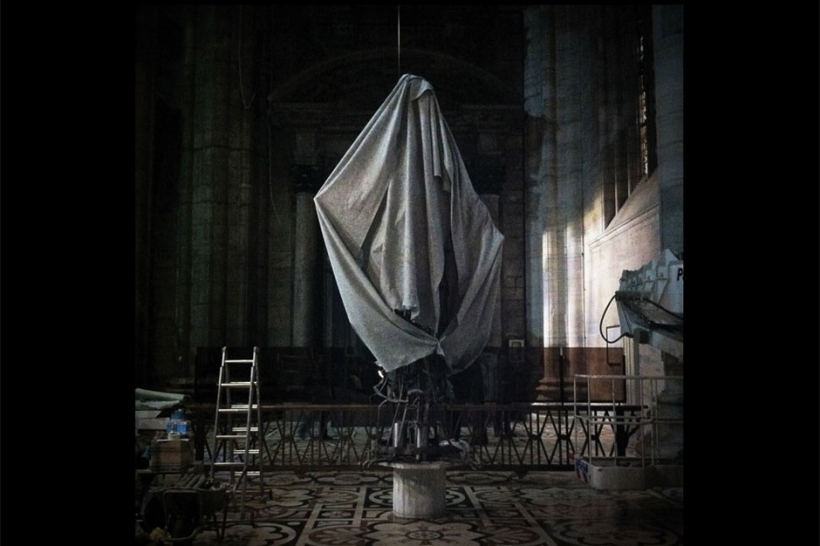Cameron Mesirow has yet to top the first track of her debut record as Glasser. Built upon a humble drum roll and a droning synth note or two, ‘Apply’ glowed through the towering layers of harmony performed by Meisirow as a choir of one. She may have arrived on the sudden raft of artists who loved going a capella with a loop pedal, but the sheer poise and crystalline clarity of her vocal elevated this song into rapturous realms. Sadly, it was a level of transcendence which the album was unable to sustain – its repetition and obvious influences leading to diminishing returns and unwelcome limitations. And while Interiors does admirable work to expand beyond the parameters of the debut album, it still hits a glass ceiling.
The starkest change between Interiors and Rings is the expansion of the arrangements. While the songs on the debut felt like their instrumentation served only to keep tempo and find pitch, little more than a whitewash onto which Mesirow could paint her Technicolor vocal loops, Interiors sees the music evolve to become a more active participant in these songs. Here she experiments much more with the possibilities of build and release, with tracks like ‘Shape’ and ‘Keam Theme’ flirting with near silence, before exploding into a wall of thumping beats and urgent synth lines. Elsewhere, a conversational interaction begins to develop between Mesirow and her backdrops, playful elements of call and response zipping between her and her instruments, all creating a dynamism we didn’t hear on her debut.
The downside to these developments is that it erodes one of the strongest aspects of her debut: her voice. On most of these songs, the more substantiated instrumentation serves to push vocal loops out of the equation, with almost all of the songs being performed with a single track vocal line and a rigid (if formless) melody. And sadly, stripped of the ornamentation of her own looping harmonies, Meisrow’s straight-up melodic instincts result in underdeveloped songs. It will take more than one listen of Interiors before you’re able to call a tune back to mind.
The record finds itself at its best when, having begun to experiment with busier instrumentation, commits to it fully, allowing the music to both surprise and challenge the listener. The short interlude ‘Window III’ emerges as one of the most vibrant and alive tracks on offer here, with the skittering rhythm track and playful parps of noise moving with a spontaneity which complements the vocal rather than antagonising it. Suddenly switching into an a capella coda (a welcome development in and of itself) ‘Windows III’ is an example of Glasser at its most satisfying: where it feels like the vocal and music cohere into something organic and thrilling.
In trying to transcend the limitations of her debut, Glasser’s second set ends up abandoning former strengths. The lifeless arpeggios which prop up so many of these songs make for a meagre replacement to Meisrow’s voice. As a vocalist and arranger, she finds herself on solid ground. But in taking strides towards fuller arrangements and bona fide song writing, Interiors finds itself lost and adrift. For an album so heavily influenced by architecture, it’s sorely lacking in structure and shape, and ultimately fails to make an imprint in spite of its broadened horizons.
-
6Russell Warfield's Score























